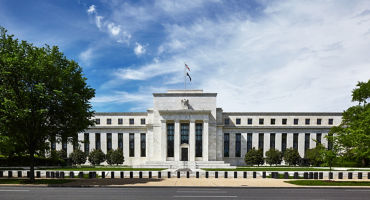The potential for volatility driven by the US election over the next few months keeps us from moving to a stronger overweight view on global equities. We do not have a high-conviction view on the election outcome and prefer to allow ourselves some room to lean further into equities at more favorable entry points.
We are neutral on US equities, mostly out of prudence as the market made new highs following the Fed’s September rate cut and appears expensive based on traditional valuation metrics. However, when adjusted for declining interest rates and long-term earnings growth potential, the US index appears closer to fair value. Earnings are supported by an expansion in margins, with the growth in productivity well outpacing that in unit labor costs and pointing to improving competitiveness.
With valuations of Japanese equities looking more favorable following the August volatility, we are leaning into Japanese equities after a hiatus earlier in the year. We believe much of the volatility was driven by technical dynamics linked to positioning and the carry trade, rather than fundamental weakness. We also believe the structural case for Japanese equities, including an improving macro backdrop, corporate reforms, and increased cash return through buybacks, remains largely intact. There is room for further re-rating here, with our expected returns evenly balanced between valuation expansion and earnings growth components.
In China, recent stimulus is a step in the right direction for liquidity and sentiment. However, we await more policy detail to determine whether this marks a long-lasting turning point in sentiment and valuations. In the meantime, weak private sector confidence, worsening property market dynamics, and intensifying deflationary risks make us cautious about the outlook.
We have also turned more negative on European equities relative to other markets. The outlook for earnings is lackluster — with the exception of more domestically oriented sectors such as banks and utilities, the region’s equities remain quite dependent on an inflection in the global cycle.
Within sectors, we are most positive on financials, followed by consumer discretionary, utilities, and IT. We have an underweight view on materials, staples, and communication services. These relative sector preferences add up to a balanced cyclical view, and our long IT versus short communication services view neutralizes an outright Magnificent Seven bet.
Government bonds: Easing cycle underway
Central banks around the world are in easing mode and China’s recent cut in the reserve requirement ratio adds to the list. Of course, there are exceptions. The BOJ is normalizing rates higher and variations in growth and inflation are causing some central banks, such as the Bank of England (BOE) and European Central Bank (ECB), to move at a more measured pace. However, we think the Fed’s strong 50 bp cut signals a commitment to sustaining US growth that will support the global economy as well.
That said, we moved our long duration view to neutral and have no regional relative value views. As in past easing cycles, markets anticipated the first Fed rate cut, with the US 10-year yield declining almost 80 bps prior to the September FOMC meeting. From here, we think the 10-year yield will remain rangebound around 3.25% – 4.25%, with the front end of the yield curve likely to experience more downward pressure than the long end. In fact, the 10-year yield actually rose after the Fed’s announcement. In addition, markets have priced in substantial additional easing (Figure 3). This includes cumulative cuts of around 180 bps by the Fed, 135 bps by the BOE, and 170 bps by the ECB over the next 12 months — all of which are more than the central banks’ own projections.

























